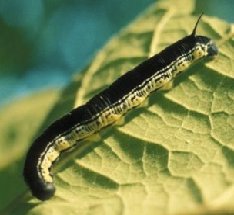
A reader asked us a couple of days ago why there are no longer Catawba worms on her Catalpa trees (or Catalpa worms on her Catawba trees – “Catalpa” and “Catawba” are interchangeable). Catawba worms make excellent fishing bait, so the reader was keen to find out how to attract them back to her trees. Since she gave no information about her circumstances, it’s of course very difficult to say why the Catawba worms left, and for similar reasons it is hard to say how to get them back. (Obviously, the two questions are related.) Even in the absence of specific information, we can still supply some general information about attracting Catawba worms to Catalpa trees, and what keeps them away.
We should begin by saying that Catawba worms, which are the larval form of sphinx moths, making them a type of caterpillar, are very discerning eaters – they only eat Catalpa trees, or technically the leaves of Catalpa trees, as we explain in our article about Catawba worms and what they eat. We assume our reader knows this and has Catalpa trees in her yard, and indeed this is implied since she once enjoyed the company of Cawtawba worms, but we thought it was worth mentioning because she only referred to “trees” in her email. If her trees have been replaced, or if the number of Catalpa trees has decreased, then this would have a depressing impact on the Catawba worm population, and it would reduce their numbers too. (Ha.) Since Catawba worms exclusively feed on the leaves of Catalpa trees, the best way to attract them is to have several healthy and leafy trees in one’s yard. Again, we have no idea what our reader’s situation is, but if her Catalpa trees aren’t in good health, this could certainly disincline the caterpillars from settling on her trees. (In general, Catawba worms don’t harm the trees they feed on – they merely defoliate them – but after years of serious infestations, they can weaken and even kill a Catalpa tree. So, if our reader experienced particularly bountiful years of caterpillars in the past, perhaps this has finally taken a toll on her trees.)
If the trees appear to be healthy, there are a couple of other factors that might be impacting our reader’s Catawba worm situation. First, and as we explain in our article about where to find Catalpa worms, the number of worms you find depends on the time of year you are looking for them. If a long, cold winter pushes the start of spring back, this could delay the emergence Catawba worms, which largely follow the rhythms of the trees’ initial blooming and subsequent growth (because they eat the trees leaves, which obviously need to grow before they can be eaten). So, perhaps the Catawba worms in our reader’s part of the country (wherever that may be) have merely been delayed in coming out. Second, Catawba worms have a number of natural predators, which can wipe out several hundred caterpillars (often the entire population of a tree) with surprising swiftness. One of these predators are wasps, which lay their white eggs inside of the skin of Catalpa worms, but there are additional predators as well, including other types of insects and various birds. Thus, even with perfectly healthy trees and a normal spring, Catawba worms might not be found.
As we have stated repeatedly, we don’t know why our reader in particular can’t find Catawba worms. Perhaps she is dealing with a unique situation, and thus none of what we say above applies to her specific circumstances. However, what we say is true in general, and if you are looking to attract Catawba worms, you might be working against tree health, the weather, and natural predators.
All About Worms is always free, always reader-supported. Your tips via CashApp, Venmo, or Paypal are appreciated! Receipts will come from ISIPP Publishing.
You might also find these guys interesting!




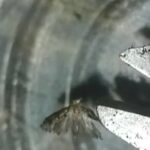
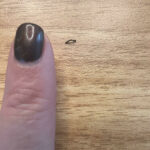

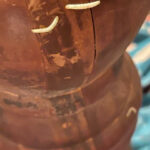
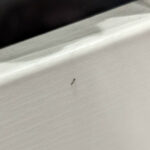
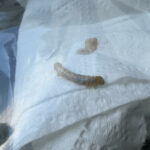
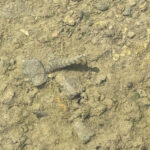


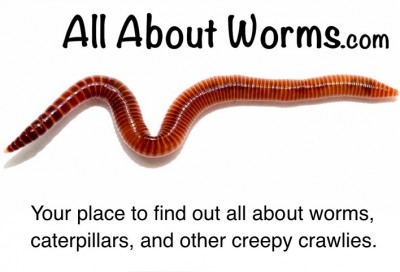
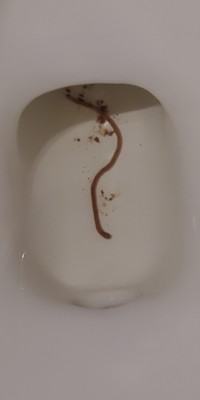


My Grandad in North Carolina, great fisherman, born in 1904, always tried to keep these going on his Catalpa trees. He would look for a healthy green Catalpa leaf with catalpa worm eggs, gently remove it from the tree (with worms), take it to another Catalpa tree (with no worms), where he would fasten this leaf to another healthy green Catalpa leaf using a wooden clothespin. Such that the transplanted leaf was in roughly the same location on the SECOND tree as its original. Has this worked for others.
And he would take worms from one tree and place them on the next Catalpa tree that had none, but while they were inch or bigger but not fully grown (not sure why his reasons). He had friends in the area who had Catalpa trees also, so if anyone needed them they would supply each others’ trees. He did not mow around them much if any and they were near an old hog wire type fence that was a bit hedgey in places with cedar, old horse pears, brambles, etc. Doubt he ever used weed killers save a goat if necessary. We have a Catalpa tree in our yard in S.C. about 6 years old, no worms yet, but we are in a suburban area where the the HOAs are so persnickity there is huge use of pre-emergent weed killers and spot killers by neighbors in our area. If you are a beekeeper, you can get your property placed on a ‘do not spray’ list and exterminators are supposed to avoid use of pesticides near your property but this doesn’t stop uninformed or uncaring private property owners from using, and overusing pest products nearby. My Grandad pronounced Catalpa like ‘catawba’ or ‘catawber’, similar to how many older people of his day pronounced the name of the grapes, river, native American tribe, or county, spelled ‘Catawba’.
I have 4 Trees I planted about 4 Years ago. 2 are in the front yard and 2 in the back yard.
It is now August 18th 2020 and I just picked about 60 worms off all the trees.
I boiled them in water for about a minute and bagged them in 10’s and now they are in the freezer for fishing later. My trees are now bare with no leaves. I miss the shade now.
Scott
Knoxville, Tennessee
When I was growing up in deep East Texas we had catalpa trees my mother planted from seeds. They always had worms in the summer time. I have seen the trees around the Houston area and no worms. I contribute this to the fire ants we have here. Part of the worms life cycle is to fall to the ground and cover up. This is food for fire ants.
I have been spraying the worms with liquid sevin and this slows them down some since the one tree has been totally deleafed.
My brother planted our tree in Nashville Tennessee around 1968. We had 100s of worms for years and all of a sudden they quit. The tree is wonderful now and so tall and healthy. He passed in 1991, and I would like to get the worms to come back…Any ideas?
@ Viki Mars Would like to speak with you about your Catalpa worms. Please contact me through my email please.
to grow Catawba trees simply let the pods dry and turn brown,carefully remove them and break open. it is best to do this inside the seeds are covered in a paper like shell and are light.place the seeds in a jar until next spring and plant them in a starter bed about a inch deep,when they get about 6 inches transplant to gal. jugs after they get a foot tall plant.i use my tractor auger to dig whole fill about half way up with topsoil put a small handful of 13-13-13 put another 8-12 inches of soil then your tree.water at least once a week for a month then when tree gets about 6-8 foot keep it pruned back to trunk,this causes it to branch and produce fresh leaves if tree leaves get old moths want lay eggs thus no worms.
I’m seeing about a hundred wasps in the catawba tree. Why is this happening?
the lady with a ( mess in her yard ) dont know how much money she is loosing buy not selling these worms most fishermen will gladly pay –about a $ a dozen for worms 1 1/2 inch long the best way to use these worms is cut in half insert hook so the worm is inside out –this method is deadly for bream also it doubles your bait .
the lady with a ( mess in her yard ) dont know how much money she is loosing buy not selling these worms most fishermen will gladly pay –about a $ a dozen for worms 1 1/2 inch long the best way to use these worms is cut in half insert hook so the worm is inside out –this method is deadly for bream also it doubles your bait .
I have 5 large Catawba trees and 6 smaller trees in my yard. I planted them for shade. It seems every year I’m infested with Catawba worms and they strip my trees so I have no shade and they make a huge mess on my deck…I’m sick of it…how do I get rid of them? It gets hot here in Mt. Pleasant, AR and I need my shade!
i have read about catalpa worms years ago it goes like this the moth flies to the tree lays her eggs the eggs hatch into the worms the worms feed and get big about your little finger some are eaten by birds some of them crawl or fall to the ground they hide in mulch – leaves dead grass or twigs some how they emerge some time later as a moth cycle stars again to support this i live in the south these trees are very common i have had two crops a year about week of 4th july again labor day week —keep mulch aroud your tree trunk;
The eradication of the boll weevil in Georgia, a pest that feeds on cotton, seems to have claimed the Catawba worm as well. There are many healthy trees, but no worms in 15 years or more.
I have several nice catalpa trees in my yard. And I have tried transplanting them from other .Trees. but they eat the leaves and are gone. I need help please because their isn’t a single fish that I cannot catch with a Catawba worm. I beg of you please help me with this problem. We worked hard planting these trees and we are not getting any worms. Any suggestions, advice would be greatly appreciated
I live in Southern Illinois and 35 years ago we had many catalpa trees with worms then farmers started using pesticides and no more worms can’t find them for love nor money. Pesticides are the root cause.
Does the mosquito spraying truck kill the worms?? Every tree in my town and the next town over never have worms.
I have about 7 big Catawlpa trees and lots of worms every year. I haven’t seen a cycle of worms here probable because we have so many trees and they cycle different years.
I was googling the worm because they get to be a problem on my carport only now am I learning how valuable they can be. Since I have 2 acres in the country I have decided to start a worm business. I live near Greers Ferry Lake at Heber Springs, Ar. and a lot of fishing traffic here on the main highway to get there. The state is turning the highway into a 4 lane now because of the heavy traffic.
This has been such an interesting read. I appreciate all the comments.
Another thing that you need to consider is that Catalpa trees go through cycles with the worms to protect the tree from damage. It has been roughly determined to be a 5 yr cycle. Every 5 yrs a tree will go through a year without worms. It is believe by scientist to be a natural defense of the tree to help it stay healthy. The leaves produce a bitter substance every five years that makes it so the Moth doesn’t lay its eggs on the tree that year. usually this lax time lasts between one and two years and usually if there are other catalpa trees in the area the worms will reappear as the trees cycle on different cycles.
When the worms leave or do not come on your trees, then the best thing to do is find someone who has some and put them on your tree that will get them re established my Grandmother taught me this and it worked. But don’t harvest the worms until the next year.
I have a beautiful calapa tree about 30′ that was completely knocked over by our last hurricane here in Mexico. I managed to get a tug-a-long to pull it upright and it is now better than ever, but I have never seen a worm on it. Also, I don’t get many flowers at all. Maybe one or two. I do bring in manure in fall every year. Any insight for more flowers?
Dear Patty – unfortunately we are not botonists or aborists, but perhaps this information will be helpful:
http://www.gardeningknowhow.com/ornamental/trees/catalpa/catalpa-tree-planting.htm
My brother and I plan to raise some catalpa trees from seedlings starting this week. We want to attract the catalpa worms to the tree and keep them forever. Please advise us on how to maintain good tree health but also if the use of weed control on the lawn may harm there return. How old does tree need to be before we should start seeing worms? We have had these trees in our city all my life. Location: Yazoo City, MS. Thank and regards.